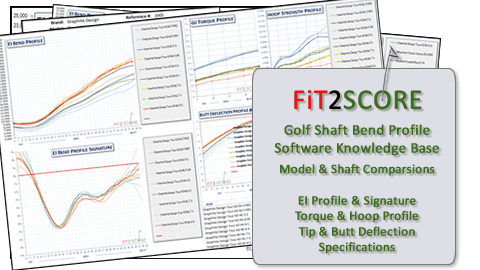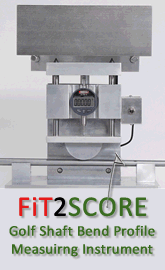Fujikura Diamond Speeder Shaft Review
Fujikura Platinum Speeder Shaft Review
By Russ Ryden, Fit2Score, A Dallas Fort Worth Club Fitter & Club Maker
The Golf Center at the Highlands, Carrollton Texas
![]()
 The price of premium golf shafts is no longer bound by the $360 ceiling that has been in place for the last few years. Mitsubishi, Oban, TPT and now Fujikura are producing a new generation of shafts and pricing them appropriately to cover the cost of the high density prepreg use in the shafts. The Fujikura Jewel Speeders have full length 90 ton fabric and Torayca T1100G.The price, $550 per shaft. What I see in these shafts is stiffness and torque numbers that correspond to shafts that last year were 5 to 15 grams heavier. These are the carbon fibers materials used in commercial airplanes where the strength to weight ratio matters. The shaft companies have to compete for these materials with other industries that buy vast quantities of fabric compared to the very small needs of the golf shaft business. Fujikura is offering two models, the Diamond and the Platinum that we can clearly see from the tip to butt ratios are low launch and high launch.
The price of premium golf shafts is no longer bound by the $360 ceiling that has been in place for the last few years. Mitsubishi, Oban, TPT and now Fujikura are producing a new generation of shafts and pricing them appropriately to cover the cost of the high density prepreg use in the shafts. The Fujikura Jewel Speeders have full length 90 ton fabric and Torayca T1100G.The price, $550 per shaft. What I see in these shafts is stiffness and torque numbers that correspond to shafts that last year were 5 to 15 grams heavier. These are the carbon fibers materials used in commercial airplanes where the strength to weight ratio matters. The shaft companies have to compete for these materials with other industries that buy vast quantities of fabric compared to the very small needs of the golf shaft business. Fujikura is offering two models, the Diamond and the Platinum that we can clearly see from the tip to butt ratios are low launch and high launch.
To continue reading this section of the review, you must be registered at a higher level membership.
Russ




